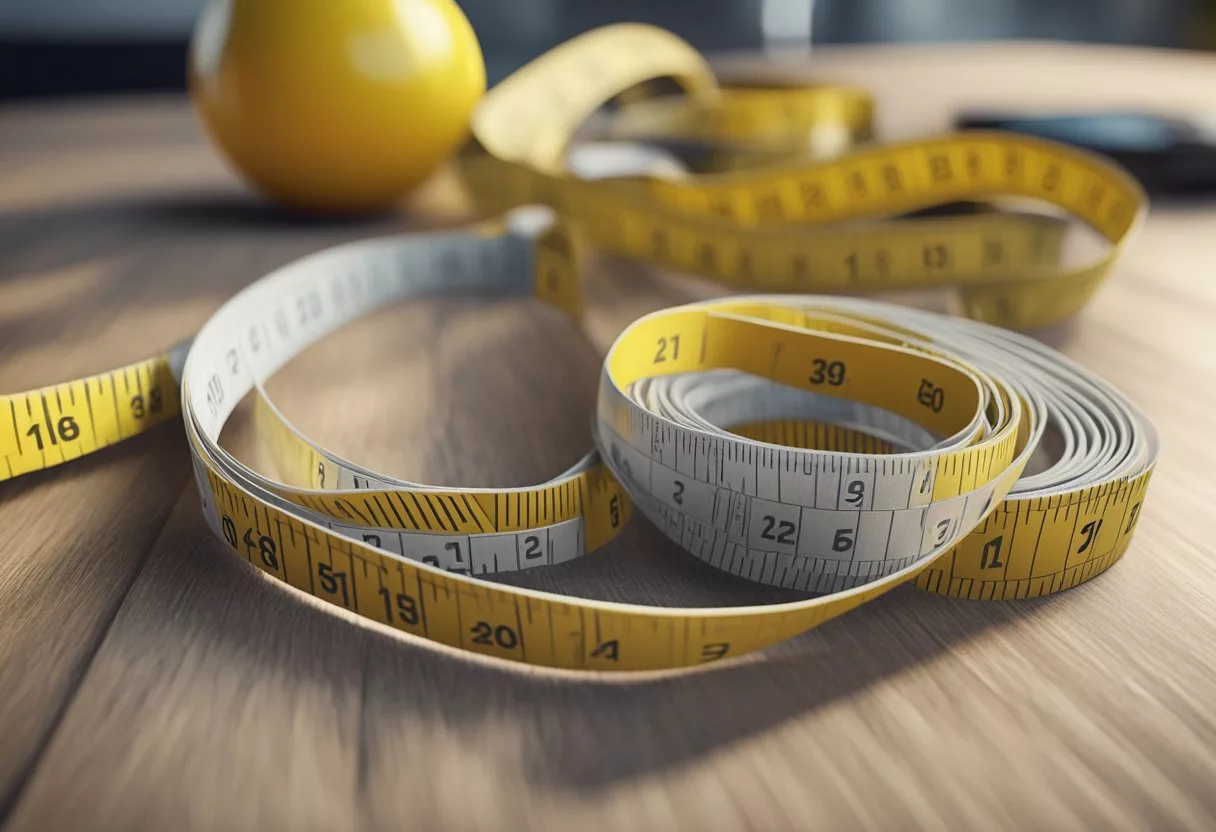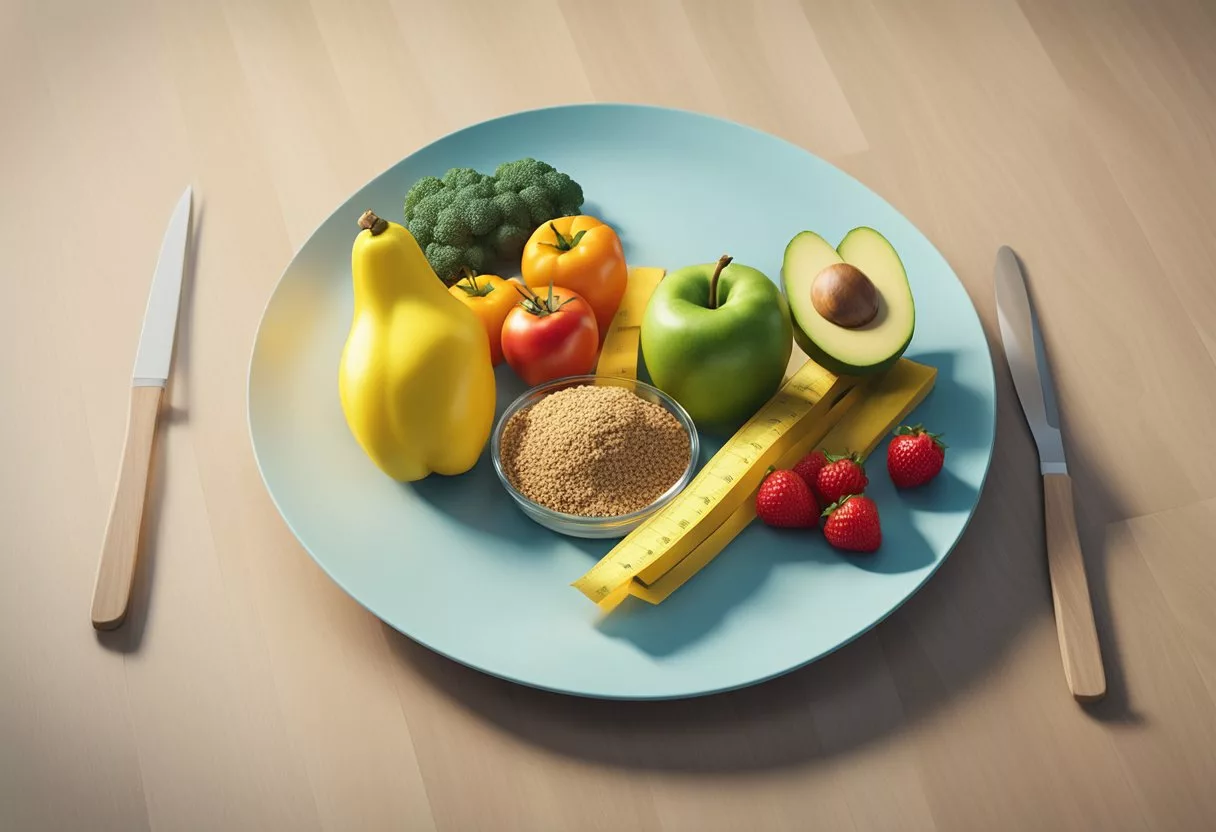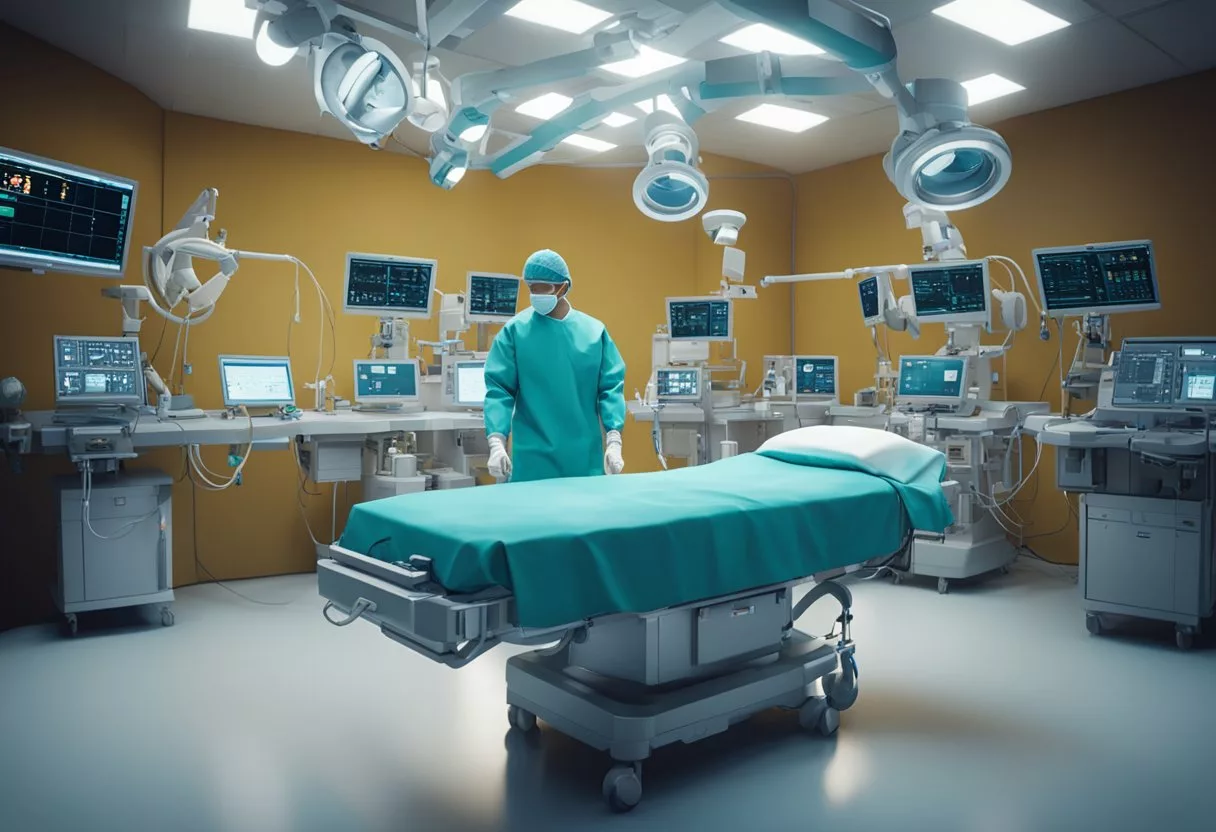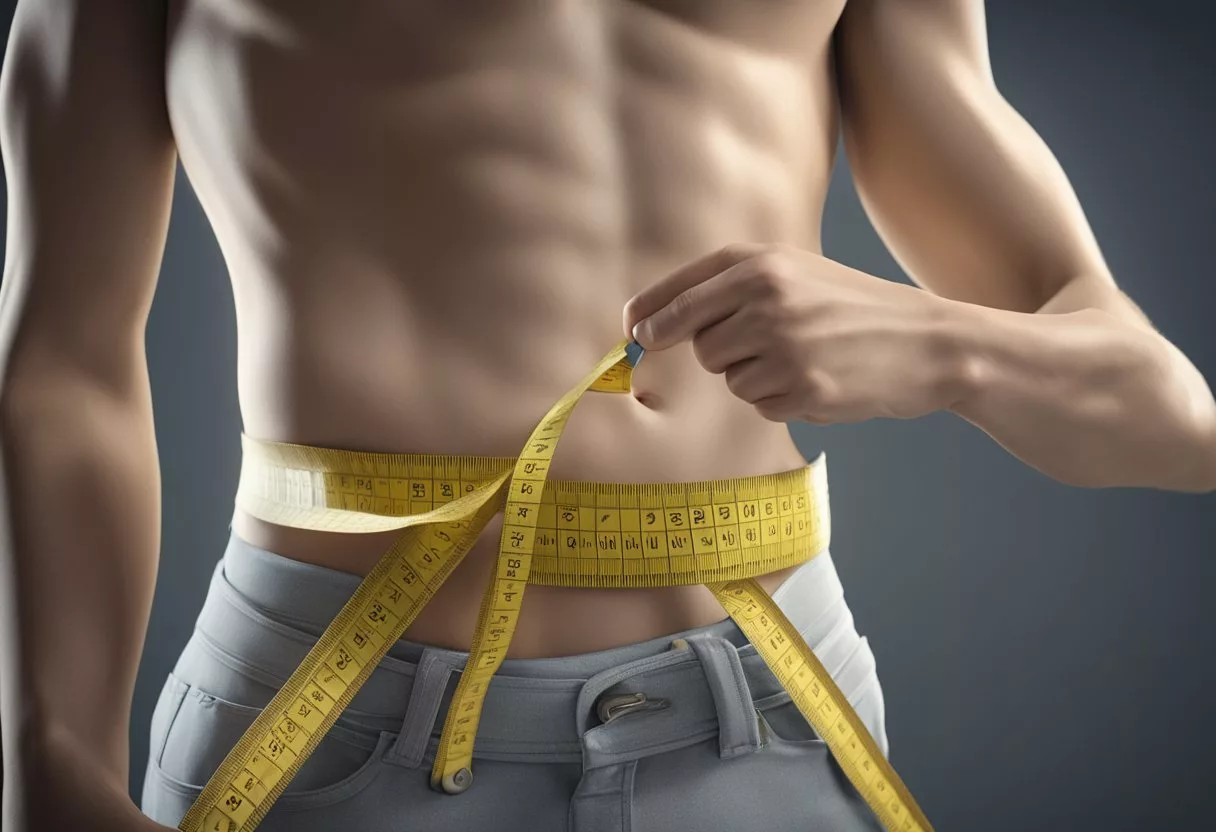FUPA, an acronym for Fat Upper Pubic Area, refers to the accumulation of fat just above the pubic bone. The presence of FUPA can be concerning for many individuals, impacting body image and self-esteem. It is a common and normal part of the body, varying in size among different individuals.

Understanding the causes of FUPA is crucial for determining an effective reduction strategy. The causes can include factors such as weight gain, pregnancy, and genetics.
Addressing FUPA primarily involves a combination of lifestyle changes and targeted exercises. Nutritional adjustments can help reduce overall body fat while specific workouts can strengthen the lower abdominal muscles, contributing to a firmer and leaner appearance.
For those seeking a more immediate solution, surgical and non-surgical procedures are also available, though these should be considered after evaluating the potential risks and benefits. Additionally, recognizing the psychological effects associated with body image concerns is important for maintaining mental health while pursuing any physical changes.
Key Takeaways
- FUPA refers to fat accumulation above the pubic bone and affects body image.
- Targeted exercise and nutrition can effectively reduce the appearance of FUPA.
- Surgical and non-surgical treatments offer additional options for FUPA removal.
Understanding FUPA

When discussing body fat distribution, the region above the pubic bone, known as the FUPA, is often overlooked yet it is a common concern for many individuals. It’s important to understand the characteristics and underlying factors that contribute to the presence of a FUPA.
Defining FUPA: Characteristics and Causes
FUPA, an acronym for Fat Upper Pubic Area, refers to the adipose tissue located directly above the pubic bone. This can sometimes be noticeable as an area of protrusion and is also known as the mons pubis.
Several factors can influence the development of a FUPA. Genetics plays a significant role in where one’s body stores fat. With aging, the body’s fat distribution can change, leading to more accumulation in the lower abdomen and pubic area. Fluctuations in hormones, particularly during events like pregnancy, can also cause an increase in fat cells in this region, sometimes making it a persistent concern postpartum.
Factors Contributing to FUPA Development
The development of a FUPA may be attributed to a variety of factors beyond genetics and aging. Stress is known to contribute to weight gain, especially in the abdominal region, due to the release of cortisol which can prompt fat storage. Moreover, significant weight gain over a short period can lead to the expansion of fat cells in the FUPA area. Additionally, pregnancy often affects this part of the body both during and after the term due to the stretching of tissues and subsequent fat accumulation as the body adapts to support the growing fetus.
It’s worth noting that while exercise can help in reducing overall body fat, the FUPA area can be particularly stubborn as fatty deposits in this region may not respond as efficiently to physical activity.
Nutritional Strategies for FUPA Reduction

Nutrition plays a key role in targeting fat in the upper pubic area (FUPA). Tackling this challenge requires a multifaceted approach that includes dietary changes to facilitate weight loss and emphasize a calorie deficit.
Adopting a Healthy Diet
A healthy diet is foundational in reducing FUPA. It should be rich in vegetables, fruits, whole grains, and lean proteins. These foods are not only nutrient-dense but also help create a sense of fullness with fewer calories, which is crucial for managing weight.
For instance, incorporating lean proteins such as chicken breast, tofu, or fish can help maintain muscle mass while promoting fat loss.
Understanding Caloric Balance
To specifically reduce fat in the upper pubic area, one should focus on achieving a calorie deficit, which means they need to burn more calories than they consume. This might involve tracking daily caloric intake or using guidance from dietary professionals. Understanding the energy density of foods can assist in choosing options that are lower in calories yet filling.
Foods to Emphasize and Avoid
Certain foods are particularly beneficial when trying to lose visceral fat, which is the deep abdominal fat that can also affect the FUPA area.
Foods to Emphasize:
- Nuts and seeds: Though high in calories, they are rich in fiber and healthy fats, contributing to satiety.
- High-fiber vegetables: Leafy greens, broccoli, and Brussels sprouts can help keep you full.
- Lean proteins: Opt for poultry, fish, legumes, and tofu to support metabolism.
Conversely, limiting the intake of high-calorie, low-nutrient foods leads to a more effective fat loss strategy.
Foods to Avoid:
- Sugary beverages and snacks: They can add significant calories without satiety.
- Refined carbohydrates: Foods such as white bread and pastries can lead to increased fat deposition.
- Trans fats and certain saturated fats: Typically found in processed foods, they can contribute to fat gain.
Effective Exercises to Target FUPA
To address FUPA, targeted exercises can be combined with general fitness routines to strengthen core muscles and enhance fat loss efforts.
Strengthening the Core
Core exercises are vital in toning the abdominal muscles beneath the FUPA. Incorporating planks and leg raises into one’s fitness routine can help strengthen the entire core, contributing to a more defined lower abdomen.
For instance, the pelvic tilt exercise engages the lower abs and can be performed by lying on one’s back, flattening the spine against the floor, and tilting the hips upward. Additionally, bicycle crunches activate the deep core muscles and obliques, effectively targeting the upper pubic area.
Cardiovascular Workouts for Fat Loss
Cardio exercises play a crucial role in burning calories and reducing overall body fat. High-Intensity Interval Training (HIIT) is especially effective for fat reduction. It alternates between intense bursts of physical activity and periods of rest, maximizing calorie burn.
Moreover, consistent cardio workouts, such as running, swimming, or cycling, can significantly contribute to weight loss and the reduction of fat in the targeted FUPA area.
Full-Body Fitness Routines
Integrating full-body exercises can increase muscle mass, which in turn boosts the body’s metabolism and accelerates fat loss.
Engaging in strength training with exercises like burpees and the hundred involves multiple muscle groups and can result in more efficient fat burn. Additionally, yoga can help improve flexibility and strengthen muscles through various poses that work on balance and core stability.
Lifestyle Modifications for Managing FUPA

To address the challenges of FUPA, or Fat Upper Pubic Area, a multifaceted approach is necessary, focusing on weight management, stress reduction, and sleep quality, all of which are pillars of physical health and well-being.
Weight Management and Physical Health
Physical activity plays a crucial role in managing body weight, which directly impacts the reduction of FUPA.
Incorporating a blend of cardiovascular exercises, strength training, and targeted abdominal workouts can facilitate weight loss and improve muscle tone in the lower abdomen. Moreover, adhering to a healthy diet rich in nutrients, and low in processed foods and sugars, assists in preventing obesity and managing FUPA effectively.
Key Components of a Healthy Diet:
- Fruits and vegetables
- Lean protein
- Whole grains
- Healthy fats
Stress Management Techniques
Stress can lead to weight gain, particularly around the abdominal area. Techniques such as meditation, deep breathing exercises, and yoga can contribute to significant stress reduction.
Establishing a routine that incorporates these practices helps to manage stress effectively. When stress levels are controlled, the likelihood of stress-induced overeating decreases, thereby aiding in the prevention and management of FUPA.
The Impact of Sleep and Well-Being
Adequate sleep is essential for overall well-being and plays a surprising role in weight management.
Insufficient sleep can lead to hormonal imbalances that increase appetite, thus contributing to weight gain and the development of FUPA.
Adults should aim for 7 to 9 hours of quality sleep each night to support their well-being and manage body weight effectively.
Creating a calming pre-sleep routine and enhancing the sleep environment are practical steps toward improving sleep quality.
Surgical Options for FUPA Removal

When considering surgical options for the removal of a FUPA, or fatty upper pubic area, it’s important to evaluate the various procedures available.
You should understand both the potential benefits and the risks involved. Surgical treatments can significantly improve the area’s appearance, but they require careful consideration.
Understanding Surgical Treatments
Surgical treatments for FUPA aim to remove excess fat and loose skin, improving the contour of the lower abdomen.
These procedures may include liposuction, abdominoplasty, or monsplasty, each targeting the fatty upper pubic area in a different way.
Patients seeking surgical solutions should consult with a certified surgeon to understand the specific details of each option.
Pros and Cons of Liposuction
Liposuction, also known as ‘lipo,’ is a surgical procedure utilized for removing stubborn fat deposits. For FUPA removal, pubic liposuction can be effective in reducing the bulge in the pubic area.
- Pros:
- Minimally invasive with smaller incisions
- Shorter recovery time compared to more extensive surgeries
- Can contour the area and eliminate unwanted fat
- Cons:
- May result in loose skin if the skin’s elasticity is poor
- Does not address excess skin directly
- Potential for temporary inflammation and bruising
Tummy Tuck: Procedure and Recovery
An abdominoplasty, often referred to as a tummy tuck, involves not only the removal of excess fat but also the tightening of the abdominal wall. This procedure may include a panniculectomy when there is a significant overhang of the lower abdomen.
- Procedure: A horizontal incision is made just above the pubic area, through which excess fat and skin are removed. The abdominal muscles might also be tightened.
- Recovery: Recovery time typically spans several weeks, with patients advised to avoid strenuous activity. Resulting scars are usually concealed below the bikini line.
Other Surgical Alternatives
Additional surgical alternatives include monsplasty or pubic lift, which specifically target the mons pubis area for a more defined pubic contour. These procedures are beneficial for patients with concerns about a buried penis or for those who have experienced rapid weight loss resulting in excess skin.
- Monsplasty: Reduces the bulge and lifts the area of the mons pubis.
- Panniculectomy: Removes the overhanging skin that sometimes occurs after significant weight loss, improving the lower abdominal profile.
All surgical treatments should be discussed in detail with a healthcare provider to determine the most appropriate approach for achieving personal aesthetic goals and to understand the risks and benefits associated with each procedure.
Non-Surgical Methods for FUPA Reduction

For individuals seeking to address a Fat Upper Pubic Area (FUPA) without surgical intervention, there are non-surgical options that may help reduce the appearance of FUPA through targeted fat elimination and skin tightening techniques.
Cryolipolysis and CoolSculpting
Cryolipolysis, commonly known as CoolSculpting, is a popular non-surgical method for reducing localized fat deposits.
This FDA-approved technique utilizes controlled cooling to freeze and eliminate fat cells in the targeted area, potentially leading to a more contoured pubic region.
CoolSculpting is designed for those who want to reduce fat without the downtime associated with surgery. It can take several weeks to months to see the full effects, as the body processes and removes the dead fat cells.
Other Non-Invasive Techniques
There are additional non-invasive techniques that may help in the reduction of FUPA:
- Radiofrequency Treatments: Devices that use radiofrequency energy can tighten skin and reduce fat by heating the tissue, which can result in a more defined pubic area.
- High-Intensity Focused Ultrasound (HIFU): Similar to radiofrequency, HIFU treatments aim to destroy fat cells and promote collagen production through focused ultrasound energy.
- Laser Therapy: Some laser-based treatments can target fat cells and may also help in skin tightening by encouraging collagen production.
These non-invasive methods often require multiple sessions and may vary in effectiveness from person to person. Consulting with a licensed professional can provide better insight into which technique might best suit an individual’s needs.
Understanding the Psychological Impact of FUPA

The presence of a FUPA, or Fat Upper Pubic Area, often affects individuals beyond the physical aspect. It can significantly influence one’s body image and, by extension, mental health.
A deviation from societal beauty standards can lead to an erosion of confidence and a sense of well-being in those who struggle with this condition.
It is well-established that persistent concerns about body image can manifest as stress, which in turn may boost the production of cortisol—a hormone associated with fat accumulation, particularly in the abdominal area. This can create a frustrating cycle where stress contributes to the problem it stems from.
Moreover, a negative self-perception tied to one’s body can lead to a spectrum of emotional issues.
These may range from mild feelings of dissatisfaction to more severe conditions like depression or anxiety.
The psychological impact of FUPA on an individual’s life should never be underestimated. It can infiltrate various domains, from personal relationships to professional settings, clouding interactions with an undercurrent of self-consciousness.
FUPA may not pose direct health risks, but the implications for mental well-being are substantial. They warrant consideration and, if necessary, intervention.
Therapies that promote a positive body image, stress management techniques, or conversations with mental health professionals might be beneficial for those affected by FUPA.
Frequently Asked Questions

In this section, detailed answers to commonly asked questions about reducing FUPA (Fat Upper Pubic Area) are provided, focusing on non-surgical approaches, effective exercises, dietary considerations, and methods for concealing this area.
How can I effectively reduce the size of my FUPA?
The reduction of a FUPA can be achieved through a combination of targeted exercises, dietary adjustments, and overall weight loss. Consistency and patience are key as the body loses fat uniformly rather than in specific areas.
What are non-surgical methods for reducing mons pubis fat?
Non-surgical methods include a balanced diet, regular cardiovascular and strength training exercises, and certain bodyweight movements that focus on the lower abdominal area. Pilates and yoga may also help tone the mons pubis.
What dietary changes may help in targeting a FUPA?
Dietary changes aimed at reducing overall body fat could contribute to a smaller FUPA. This means consuming fewer calories, choosing whole foods, and increasing protein and fiber intake while reducing processed foods and sugars.
Are there specific exercises that focus on losing fat in the pubic area?
Certain exercises like pelvic tilts, planks, leg raises, and bridges can help strengthen and tone the lower abdominal muscles, though spot reduction is not possible—these exercises should be part of a comprehensive fitness routine.
Can FUPA completely disappear with proper diet and exercise?
While a FUPA can substantially reduce in size with adequate diet and exercise, complete disappearance varies based on individual body types and genetic factors. Consistent lifestyle changes can lead to significant improvements over time.
What are ways to conceal a prominent upper pubic area?
Concealing a prominent FUPA can be done through wardrobe choices. High-waisted pants, compression garments, and shapewear can provide a smoother appearance and boost confidence.